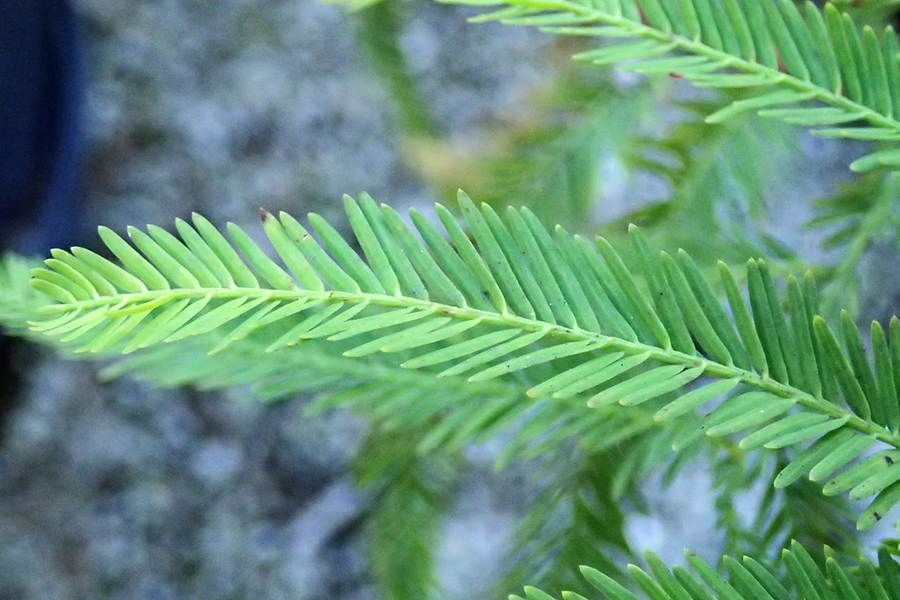Taxodium distichum
Lumber from the bald cypress is rot resistant. Additionally, like other cypress species, it has protruding structures above the roots called “cypress knees.”
Location
See if you can spot the bald cypress tree as you walk along Larch Lane Trail. Whilst you’re on this trail, see if you can spot some of the other species planted in recent years.


History at Hadwen
Although there are no records from Hadwen’s time living on the estate to suggest he planted a bald cypress tree, we still have one in the arboretum. The bald cypress tree that can be found here was planted in 2021 by Clark University.
Keep Learning
Detailed Species Information
Bald cypress, sometimes known as swamp cypress, is a deciduous conifer in the family Cupressaceae native to the southeastern United States. Bald cypress is a slow-growing and long-lived tree, with the oldest bald cypress “Big Dan” in High Springs, Florida living an estimated 2,704 years. Typically, bald cypress trees reach heights of 35–120 feet (10–40 meters) and diameters of 3–6 feet (0.9–1.8 meters). The largest diameter bald cypress was recorded in Texas with a circumference of 39 ft (11.8 meters) and the tallest was recorded in Virginia standing 145 feet (4.1 meters).
The main trunk of bald cypress is often surrounded by distinct “cypress knees,” which are protruding structures appearing above the roots of the tree. The bark ranges in color from gray to reddish brown with a stringy texture and shallow, narrow ridges. The leaves of the bald cypress are needlelike, emerging in the spring with a green color and turning copper in the fall before dropping before the winter.
The seeds of the bald cypress are contained in cones which are dispersed by floating in waterways until deposited on the shore or by wildlife such as squirrels which eat the seeds. This species is able to adapt to a wide range of environmental conditions including high salinity, drought, swampy, poorly drained soils, and a wide range of light conditions. Bald cypress prefers humid climates, but is a hardy species and can be found in both cool and dry environments.
Because of the unique appearance and hardness of bald cypress, it is a popular ornamental species across much of North America, Europe, and Asia and many cultivated varieties are used in landscaping. Beyond its versatility for planting, the wood of this species is valuable lumber. The mineralized prehistoric wood that can be found in swamps is typically prized for carving. Various Native American tribes used the lumber of bald cypresses to construct homes, canoes, and coffins. Today, bald cypress lumber is still utilized for a wide variety of uses including timber framing, fencing, flooring, cabinetry, shingles, caskets, and garden boxes.
